Variegated hibiscus: varieties and growing rules
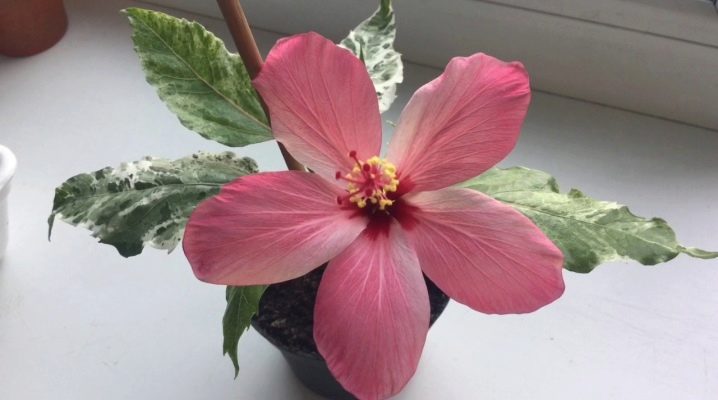
Hearing the word "hibiscus", flower growers do not immediately understand which plant they are talking about. They know it by a different name: the Chinese rose. This member of the Malvaceae family grows as a bush, tree or herbaceous modification. It is found in the wild on almost all continents. Thanks to the efforts of breeders, flower lovers have the opportunity to breed it at home.
Description
In the genus hibiscus, according to various estimates, there are from 150 to 300 species. One of the varieties is variegated hibiscus, which keeps itself apart in a row of stately brethren. Its main feature is elegant leaves, sometimes striking with a riot of colors. They come in white, red and green shades. The color is influenced by:
- humidity level;
- lighting mode;
- soil quality;
- indoor air temperature.
When a flower stands in the shade, the color fades, and if it bathes in the bright rays of the sun, then it becomes variegated. Otherwise, this type of hibiscus is no different from others. It is unpretentious and disease resistant. With a short flowering (a day or two), pink or red buds open on it.

Subspecies
Florists grow successfully several variegated hibiscus varieties.
- Hibiscus "Cooper" (Hibiscus rosa-sinensis var.cooperi). The name was coined in honor of Daniel Cooper, who brought him to the UK from the Pacific territory of France: New Caledonia.
- Hibiscus "Carnival" (Hibiscus rosa-sinensis var.cooperi carnival). It is dominated by pink shades in the bud.
- Hibiscus "Snowquin" or "Snowflake" with variegated leaves, and there is more white in its color than other species. He has leaves of a different shape, and the bush itself is small in size. During flowering, scarlet buds bloom on it.
- Hibiscus "Rose Flake"... The leaves are green-white-pink, and the buds are bright scarlet.
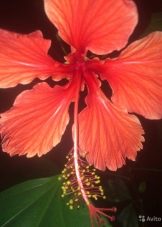


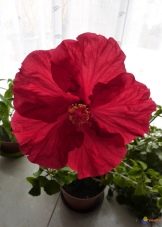
Care features
Growing a variegated hibiscus house is an exciting and curious process. With the cultivation of variegated hibiscus, there are no problems not only for experienced flower growers, but also for beginners. Subject to simple rules, the flower always has lush leaves and abundant flowering.
Temperature
For successful growth, formation and flowering of plants in the room, the temperature is maintained from +20 to + 25 ° C. In autumn and winter, if there is an interruption in heating, hibiscus will not die if the temperature is kept above + 13 ° C.

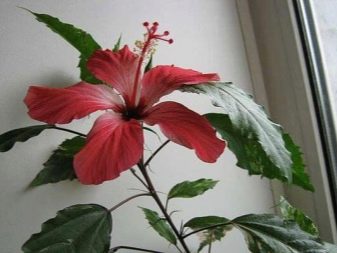
Watering
During the period of active growth, the plant needs abundant watering with warm, settled water. In winter, their frequency is reduced to prevent waterlogging. However, the flower is watered without waiting for the soil to dry completely. Experienced growers maintain soil moisture with mulching or daily spraying with a spray bottle. Noticing excess water in the pan, they drain it.
To prevent some diseases and cleanse the leaves from dust, they occasionally take a pot with a plant to the bathroom and pour it with cool water from the shower.
Lighting
If you put a flower pot on windows that face east or west, it will grow successfully and bloom luxuriantly. Growing it on the north window, the grower will face a slowdown in growth and a decrease in crown density. At the same time, the lack of sunlight will not affect the flowering and splendor of the buds. The lighting problem is solved by backlighting with a fluorescent lamp.
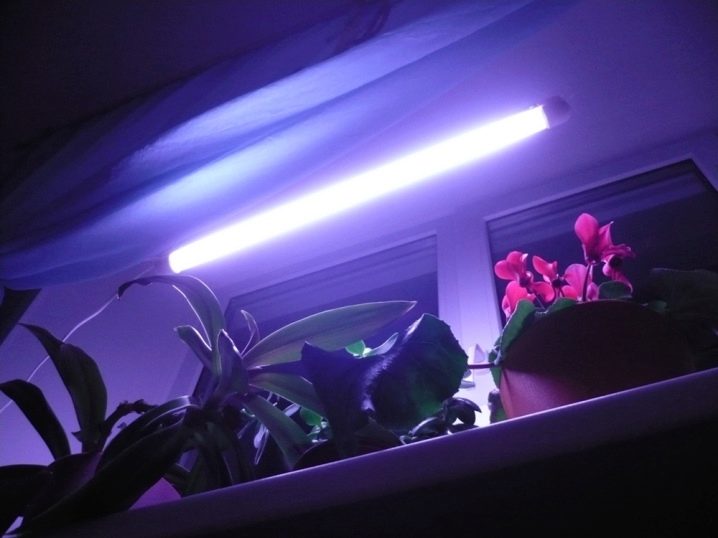
Pruning
Growers remove dried branches and protruding shoots whenever they want. They give the desired shape to the crown without fear that the flower will wither.In spring, pruning is done thoroughly, shortening the shoots by a third to increase branching and stimulate flowering. Experienced flower lovers prune the plant, giving it the shape of a small standard tree with a trunk diameter of about 1.5 cm. They trim the crown to 16-17 cm.
Top dressing
Every 3-4 weeks from the first days of spring to the end of autumn, the flower is fed. For this, fertilizers are not used in which nitrogen predominates. On the one hand, the introduction of such dressings will contribute to the growth of green mass, and on the other hand, because of this, the leaves will lose their variegation.
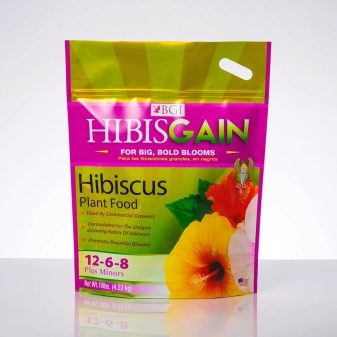
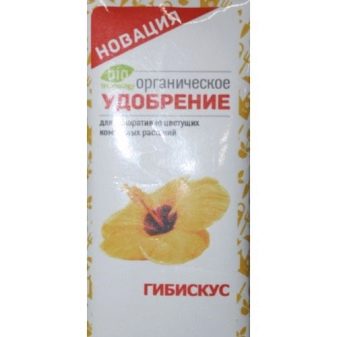
The soil
For normal growth, the plant needs loose soil. The soil mixture is prepared independently, taking the components in the same proportions:
- garden land;
- perlite / coarse sand;
- wet peat / humus.
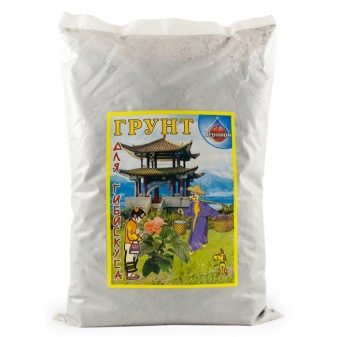
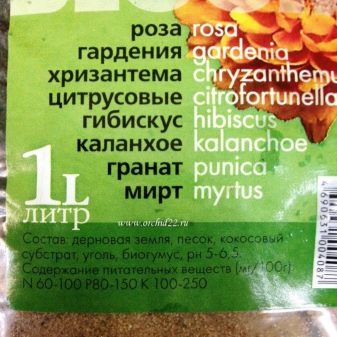
To reduce acidity, a small amount of slaked lime is added. The plant is transplanted into a pot with an abundance of holes in the bottom.
It should not be too small or too large in size so that the hibiscus does not die and its flowering is not disturbed.
Transfer
Variegated hibiscus is transplanted annually until it reaches 6 years of age. Then the transplant is not carried out, limiting itself to updating the top layer of the soil. Before replanting, wait until the hibiscus warms up to room temperature. The procedure is carried out step by step.
- Transplanting begins with laying a drainage layer up to 2 cm thick on the bottom of the selected container. Good drainage is obtained from shards of ceramics, small pebbles, coarse sand or expanded clay.
- The soil prepared and mixed in advance in a separate container is poured on top.
- The plant is removed from the old container. If it grew in a plastic pot, the container is gently crumpled from the sides and the flower is taken out. The roots are examined, removing the soil from them, if necessary, using a wooden stick.
- Place the flower in a new pot, sprinkle with fresh soil, and tamp it with your fingers. The soil is poured not to the edge, but stepping back 1.5 cm from it.
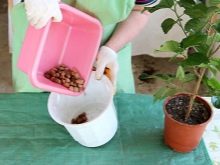
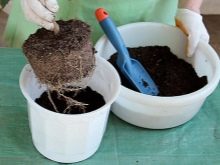
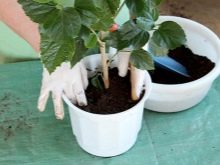
Pests and diseases
Variegated hibiscus rarely gets sick. Sometimes they notice aphids, whiteflies, spider mites, thrips on parts of the plant. In most cases, parasites attack a flower due to non-compliance with the rules of maintenance. To combat them, they buy special preparations in a flower shop and work with them according to the instructions, and for prevention they wash the hibiscus with soapy water.
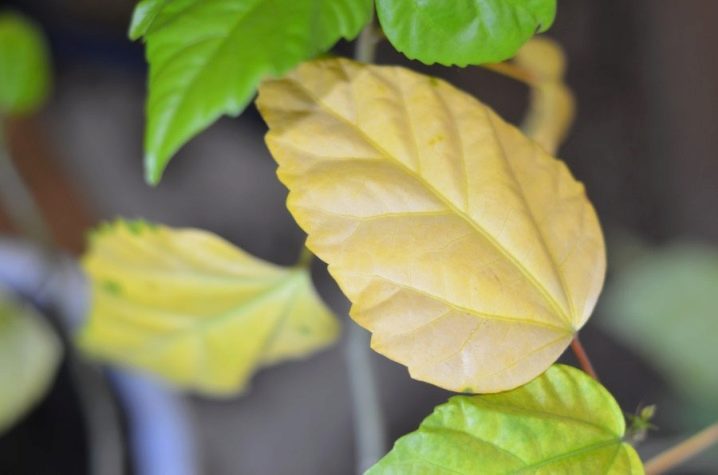
For the features of variegated hibiscus, see the following video.




























The comment was sent successfully.